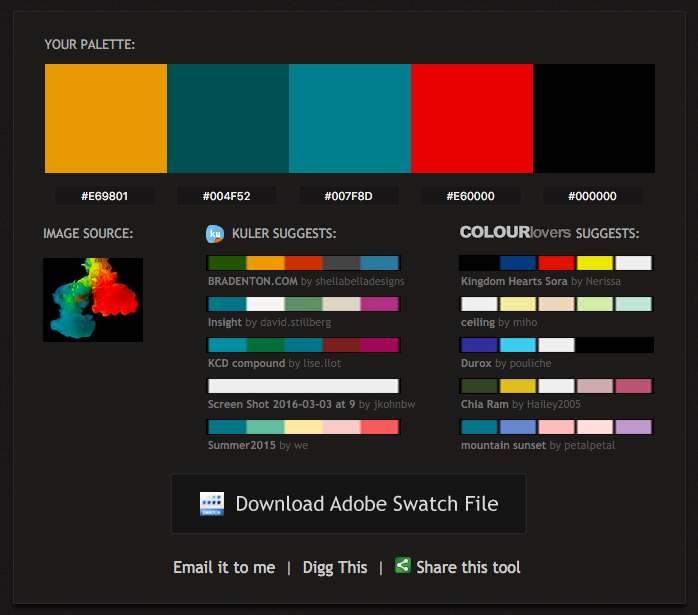How To Choose The Right Shirt Color and Material For Your Design
You've got your design down, now make sure your shirt is the right color and material to match. It's a mix of color theory and chemistry to get it just right.
Let’s say you’ve got your imagery worked out - awesome designs, great colors. Branding’s figured out, you know who your market is, and you’re ready to get your white designs printed on some lemon yellow T-shirts…Wait, what? Is that even a good idea?
Which colors go with which aesthetically? How do you choose the right shirt color and material for your design? That’s an aesthetic decision - your choice. What’s not up to you is how colors go together visually and how dyes interact with each other chemically.
What color combinations work best for your nightclub or surf school? No best practice guide can answer those questions. Finding out what colors your customers prefer is a process of experimentation. But you can know in advance which colors tend to work well together, which shirt backgrounds are versatile and popular, and which inks tend to play well with others.
That’s what we’re here for.
First, let’s talk technicalities.
When you dye a T-shirt with a water-based ink, you have several things in play. They are:
- Ink color
- Shirt color
- How the ink and shirt look together - some color combinations look great, others are invisible, muddy or garish.
- How the ink and the shirt’s background dye react to each other chemically - this can change the color of some dyes.
- What the T-shirt’s made of - which fibers, which proportions.
(Yeah, you could use plastisol inks too, but water-based inks are way better looking, last longer and make a shirt feel lighter, classier and more comfortable.)
We need to get all these in a good place to get a good result.
Ink and T-shirt Colors
Considered in isolation, a T-shirt color has to be something that people might actually want to wear. Beyond that, it’s up to you. It becomes an issue for other reasons. Same with ink colors - your design, your choice, but some designs just won’t look great on some shirts even when they’ll print.
Remember, too, that if you’re buying your shirts online, you don’t know what your shirts are going to look like under natural light until they arrive. Images of models wearing the shirts are taken in photographers’ studios, under artificially perfect lighting conditions that maximize contrast and color saturation. Then, those images are displayed on your computer screen - which itself is designed to make colors look better. When your shirts arrive, even plain colored shirts with no additional graphics will look a lot different at 4 PM on an autumn day in New England than they did on a slick website.
What can you do about this? One option is to score a test shirt. Most companies that print shirts buy the shirts from a small number of manufacturers. Hanes, Fruit of the Loom, Anvil are all common choices
You can go to stores, online or off, and buy single plain color shirts in the colors you’re considering using, from the same manufacturer that supplies the T-shirt printer you’re eyeing up (that’s us, right?). Look at the shirt at different times of day and under different lighting conditions - does that striking hunter green just look brown and dull, or that high, bright yellow look acidic and weird?
Color Combinations
If you’re unfamiliar with printing T-shirts, you should think about the effect of certain color combinations. For instance, pink and white is a popular color combination - but white text on a pink shirt will be all but unreadable. Navy on dark gray and white on yellow have a similar effect.
‘Take advantage of complementary colors, and experiment with analogous and monochromatic.’
If yes, awesome. If not, don’t sweat it.
First, here’s a color wheel:
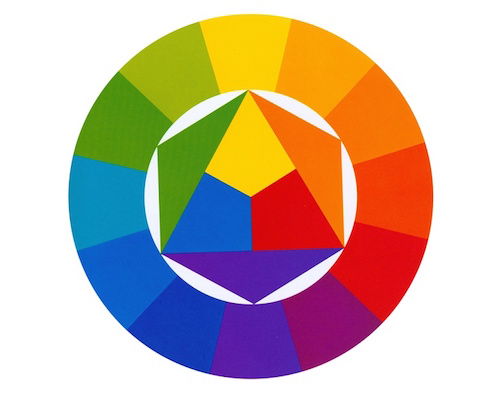
They’re there to show artists which colors go with which, and how colors fit together practically. The upright triangle in the middle is primary colors - everything else is made out of those. Mix two primaries to get secondaries - the three triangles facing outward: green, orange, and purple. Mix those or scale between them to get all the others.
Here’s a basic key to the colors:
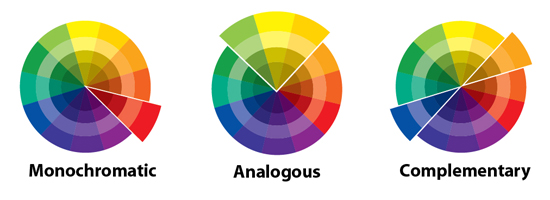
Image Source: http://www.jsgtlr.com/ed68adfd38338620-monochromatic-color-harmony.html
Complementary colors
Colors from opposite sides of the color wheel. When you mix light in these colors, you get white or a grayscale color because they cancel each other out. When you put them next to each other, they pop like nothing else. Blue and orange, yellow and purple, green and red: they stand out against each other, but the effect feels right. It’s not garish and clashing.
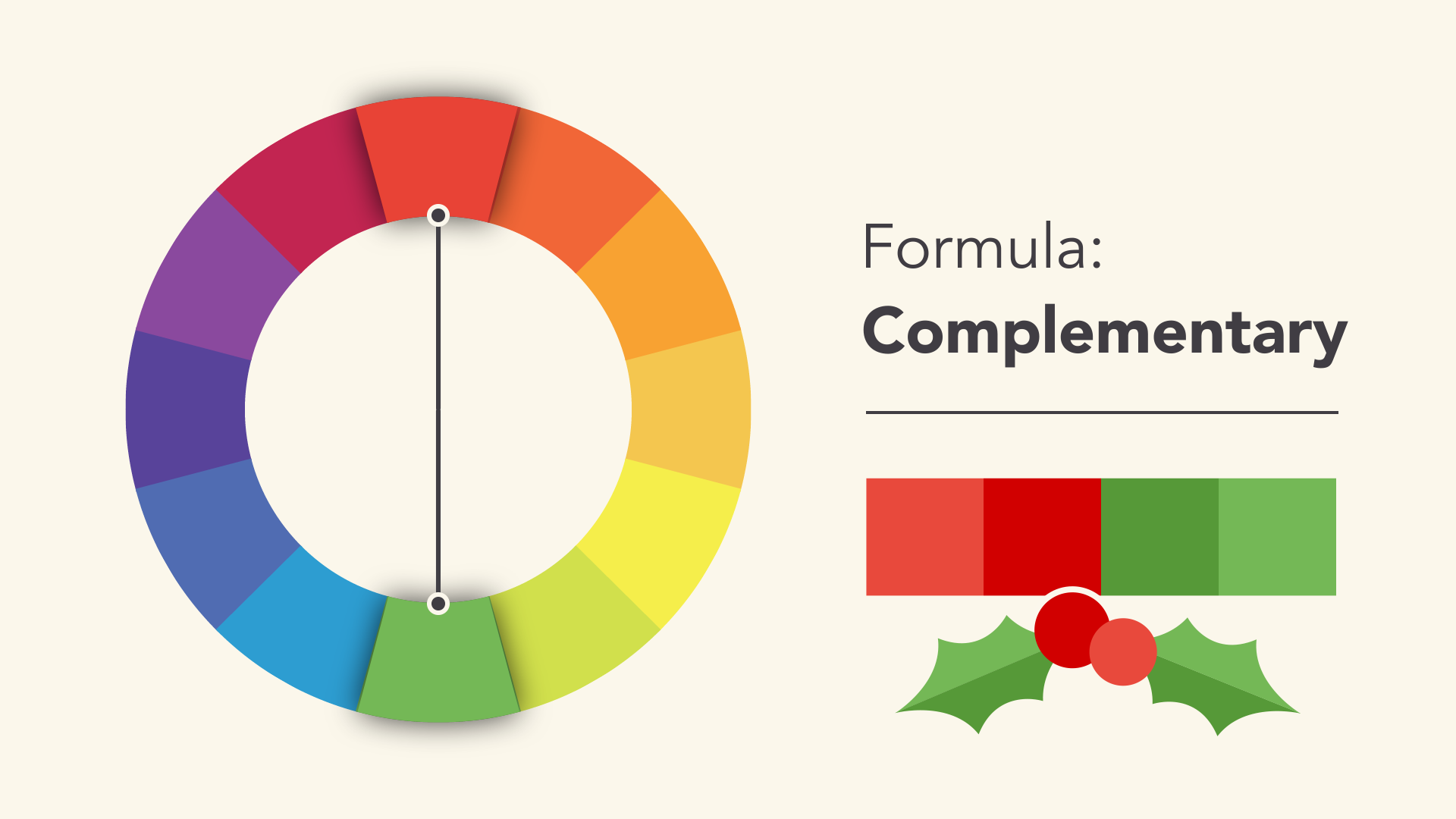
Image Source: http://www.gcflearnfree.org/print/beginning-graphic-design/beginning-graphic-design-1
Analogous colors
Groups of three colors next to each other on a color wheel. Usually one is strongest, and the others act like echoes of it.
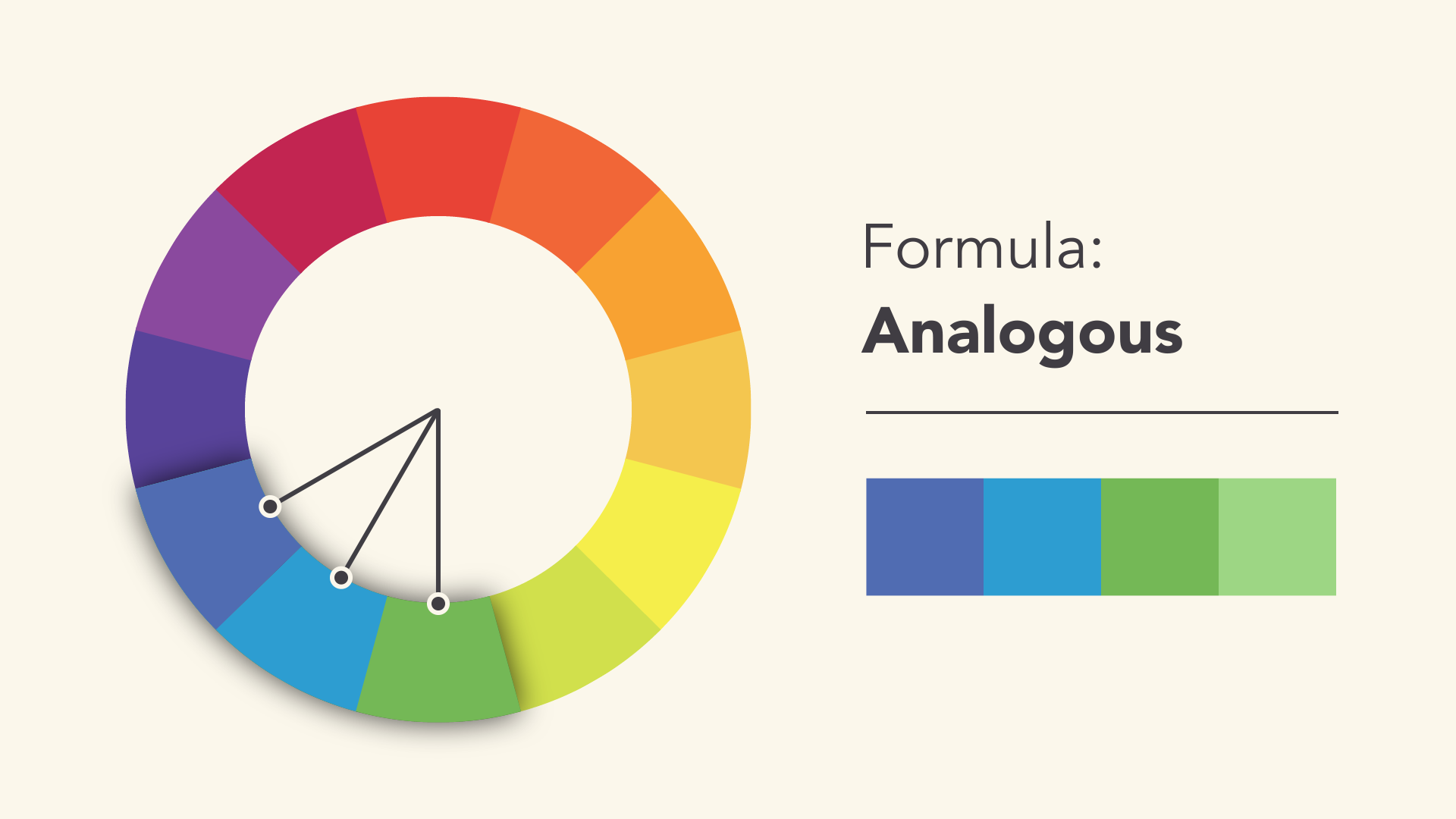
Image Source: http://www.gcflearnfree.org/print/beginning-graphic-design/beginning-graphic-design-1
Monochromatic
Monochromatic are all the different ‘flavors’ (hues, tints, shades) of a single color.
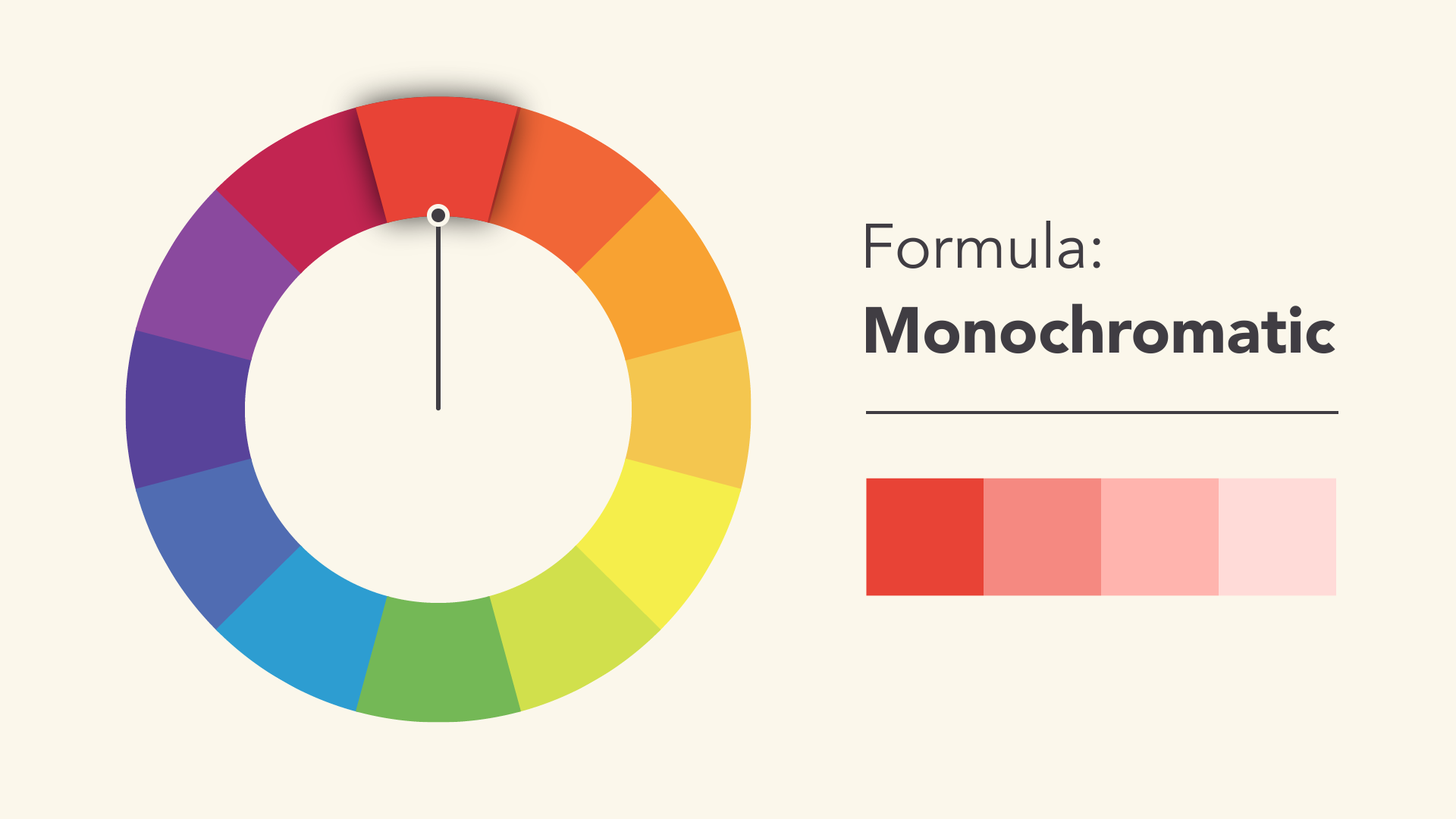
Image Source: http://www.gcflearnfree.org/print/beginning-graphic-design/beginning-graphic-design-1
Shirt Chemistry 101
T-shirt dyes are often not a single color. The T-shirt might be black, but the dyes that go to make it black are often a lot of different colors. That’s why when you spill bleach on black shirts, you’re going to see blues and browns, not just gray, white and black:
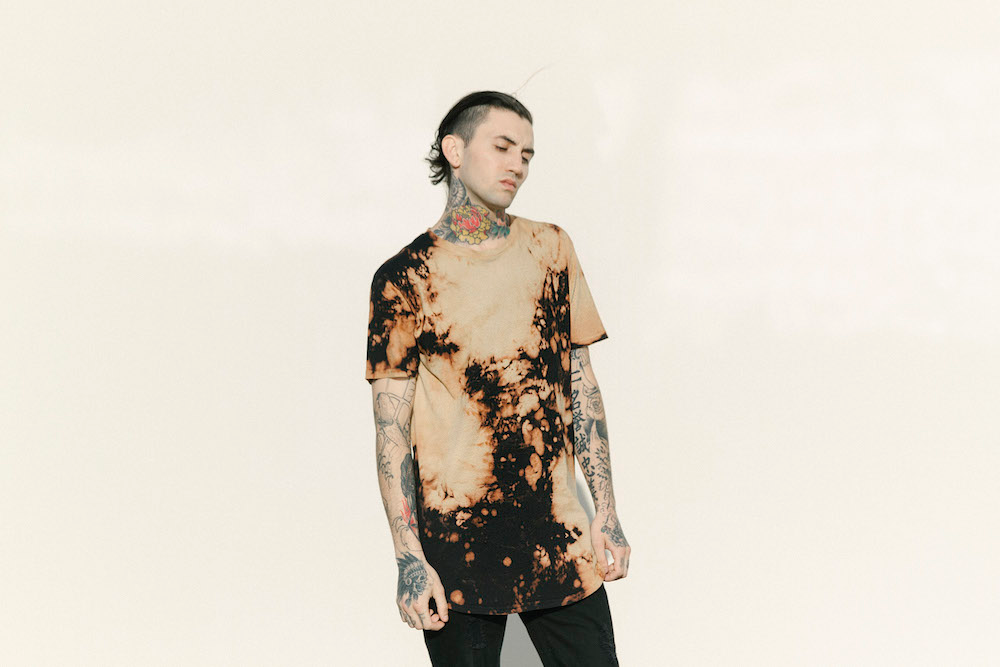
Image Source: http://entitylife.com/2016/03/17/bleach-wash-capsule-collection/
So you have two options when you print water-based inks onto a T-shirt.
Option 1 (okay): Only use dyes that are much lighter than the shirt you’re printing on. If you have a graphic in midnight blue and you want to put it on a classic light gray marl shirt, have at it: you’ll have no problems.
Option 2 (better): Use a discharge ink like SuperSoft. These inks basically bleach the shirt under the new ink, destroying the old dye and replacing it with the new dye of the graphic you’re printing on the shirt. That means if you have a pale colored graphic - white, pink, gray, or pale yellow, blue or green - you can still apply it to a much darker shirt.
Blended T-shirts
Because it dyes the actual fibers of the shirt, water-based ink doesn’t always work at all on shirts with a high proportion of polyester or other artificial fibers. Cotton fibers are a kind of dull brown in nature: then they’re bleached and dyed. You can add bleach and bleach them again, then dye them again. But polyester and other artificial fibers aren’t like that. They’re not dyed - they’re colored when they’re produced and spun. You can’t dye them.
That means printing onto blended shirts isn’t always totally plain sailing. There are several reasons why people use blended shirts - either polycotton (polyester and cotton) or tri-blend, featuring three fibers: cotton, polyester, and rayon. Blended T-shirts often hold their shape better and resist wear better. But when you print onto a blended shirt, only the cotton gets dyed. The artificial fibers don’t.
What difference does the blend make to the final image? Check this out: four shirts, same design, different blends.
1: 100% Black Cotton
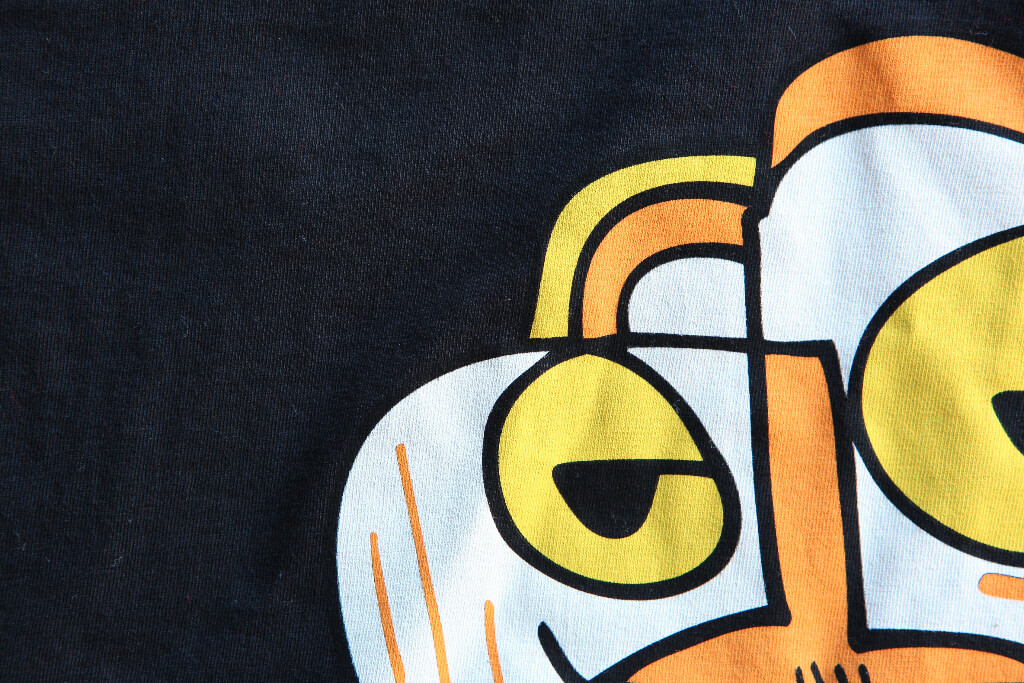
All cotton means 100% of the fibers in the shirt are dyed. The white is solid, the colors are bold, the black is deep. Looks good.
2: Poly Cotton (50% polyester/50% cotton)

A heathered black T-shirt from American Apparel still takes the design well, even though half the fibers won’t take a dye! But it doesn’t look as strongly contrasted and punchy as the 100% cotton.
3: Tri-blend Dark Color (50% cotton, 25% polyester, 25% rayon)
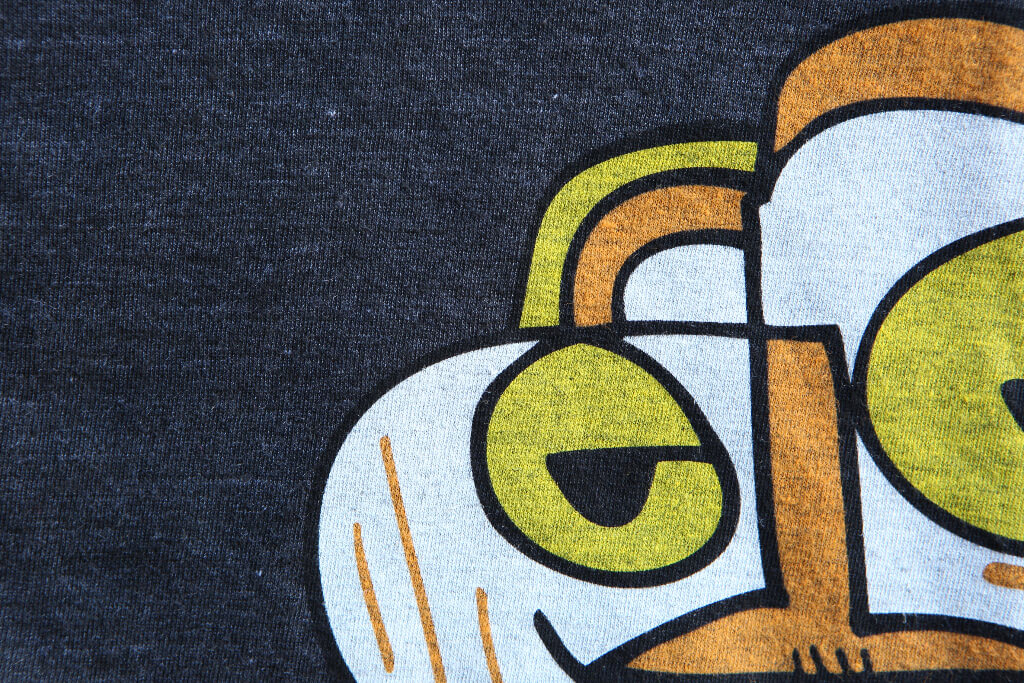
The heathering is more pronounced, and you can see the weave of the shirt through the design on this one. That’s not always a bad thing - you just need to be aware of what the effect of different fabric blends will be, visually.
4: Tri-blend Light Color (50% cotton, 25% polyester, 25% rayon)
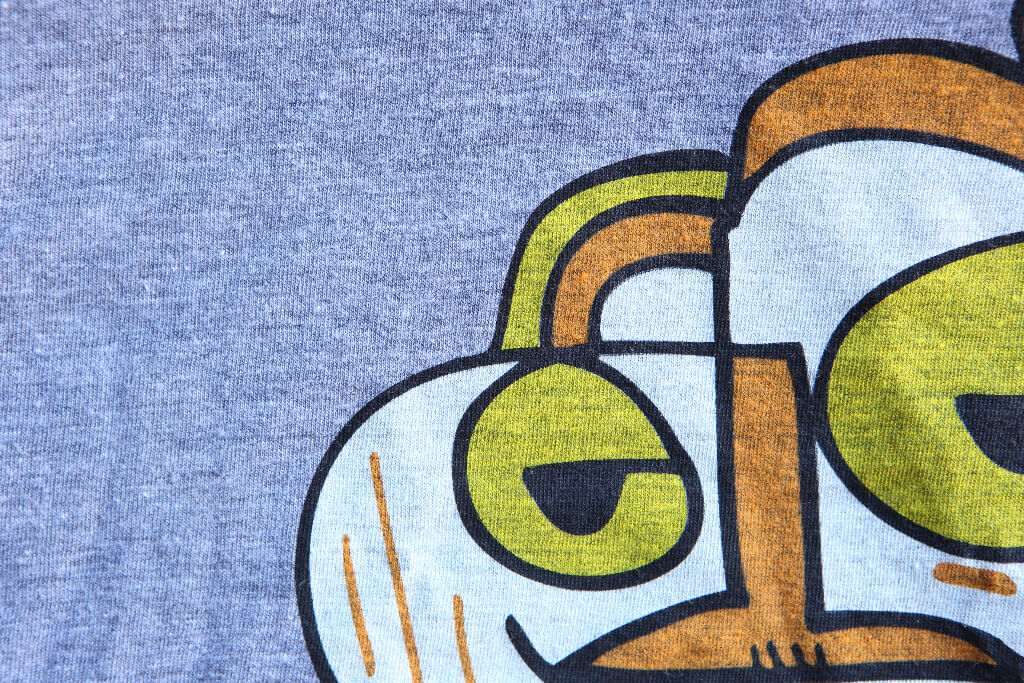
Light colored shirts make the dark colors in designs stand out more. Here, the design looks almost faded and the heathering of the shirt’s weave carries through into the design. Good look? Bad look? Depends on what you’re going for. But it’s going to happen with tri-blend shirts.
Choosing a T-shirt Color
Taking all that into account, here are some of the color combinations that work well together - and some that you should definitely avoid!
Colors That Work Well Together
Shirt Color: | Ink Colors: |
|---|---|
Pink | Yellow, strong mid and light blues (baby blues will become invisible). |
Light green | Navy blue, gold, white |
Gray Marl/Heathered Grays | Deep navy blue, brick and rust reds, dusty pale blues |
White | Plum and brick red, graphite |
Black | Graphite, maroon, white |
Yellow | Aquatic blue, pink, menthol green |
Red | Black, graphite, royal blue |
Common Colors That Don't Work Well Together
Shirt Color: | Ink Color: |
|---|---|
Light colors, like pink and yellow | Pastel shades. They become invisible, and script loses legibility. To fix it, make different color choices - or use a dark outline around the pastel graphic to differentiate it visually. |
Dark Colors | Other dark colors, especially similar ones! Dark on dark is seldom a good look. It can make a striking shirt look muddy because of the way the colors interact visually, and it’s very hard to make designs stand out when you do this. You’re also more likely to get a dye issue because dark colored dyes are usually more than one pigment. |
Use an online platform for palette creation
Luckily for us there are many platforms out there that can help us create a good palette. My personal favourite is Adobe Color CC, which not only lets you create a palette using the compositions we mentioned above for free, but also allows you to browse countless combinations that have previously been created by other users.
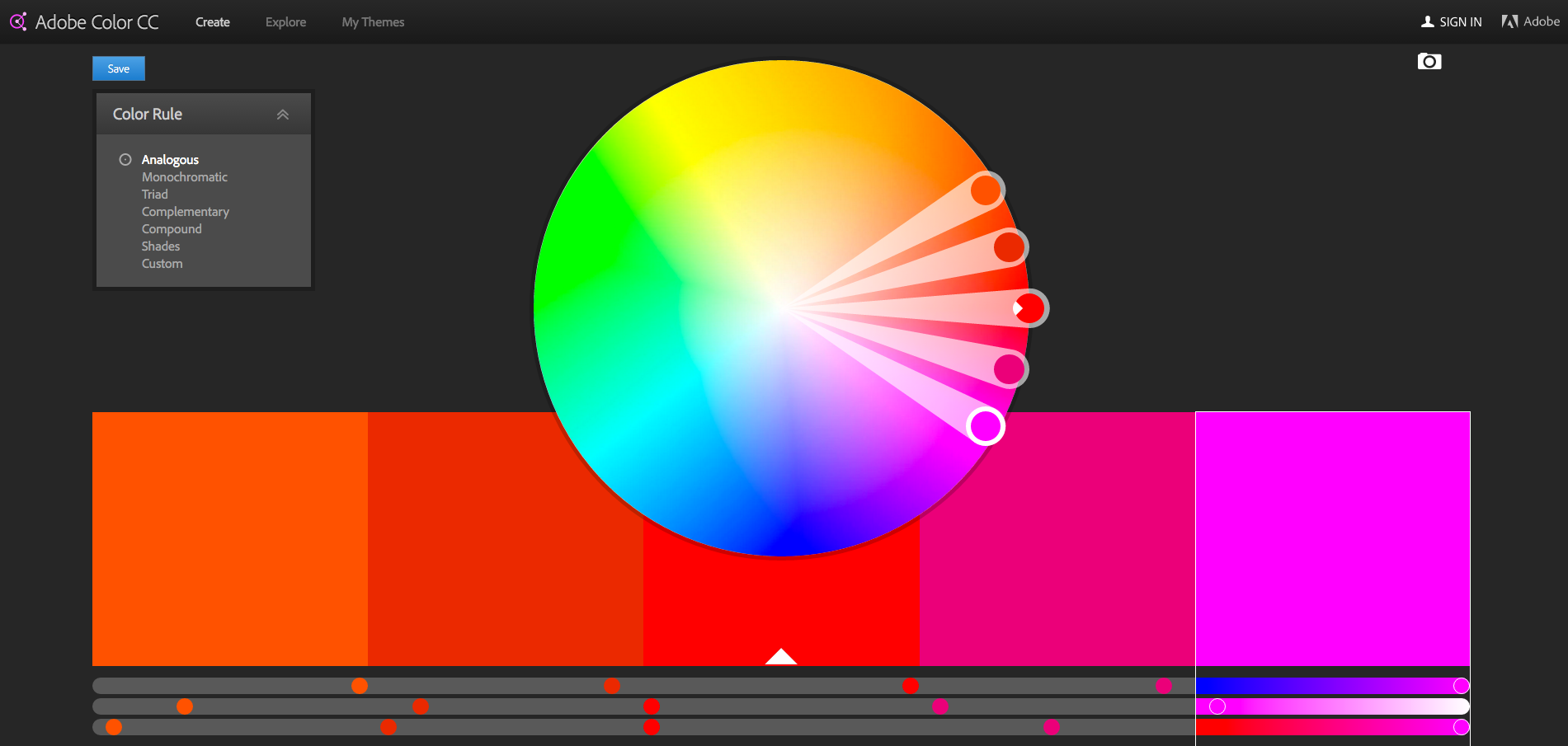
Create a palette from a photograph
Ever done this before? It can be quite fun. Platforms like Pictaculous can help you easily create a palette. All you need to do is upload the photo you want to use as reference and then voila! the colour combination has been automatically generated. Or, if you’d prefer to do it manually, you can also use a design program like Photoshop that allows you to pick colours from a picture using the eye drop tool.
Conclusion
Which T-shirt works best for you will depend partly on your brand, partly on what you’re trying to achieve with that particular T-shirt. But it also depends on colors that go well together, and knowing how your graphic is going to look on different fabrics.
Thanks for taking the time to read this post. We’d love to hear from you! Please leave a comment below and let us know your experiences with t-shirt design software.
Pin this post for later! 
